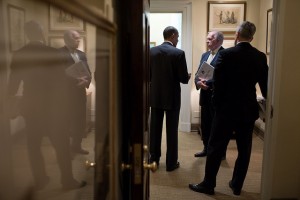If Only DOJ Hadn’t Burned AP’s Sources …
The State Department announced a broad but vague warning today.
The Department of State alerts U.S. citizens to the continued potential for terrorist attacks, particularly in the Middle East and North Africa, and possibly occurring in or emanating from the Arabian Peninsula. Current information suggests that al-Qa’ida and affiliated organizations continue to plan terrorist attacks both in the region and beyond, and that they may focus efforts to conduct attacks in the period between now and the end of August. This Travel Alert expires on August 31, 2013.
Terrorists may elect to use a variety of means and weapons and target both official and private interests. U.S. citizens are reminded of the potential for terrorists to attack public transportation systems and other tourist infrastructure. Terrorists have targeted and attacked subway and rail systems, as well as aviation and maritime services. U.S. citizens should take every precaution to be aware of their surroundings and to adopt appropriate safety measures to protect themselves when traveling.
We continue to work closely with other nations on the threat from international terrorism, including from al-Qa’ida. Information is routinely shared between the U.S. and our key partners in order to disrupt terrorist plotting, identify and take action against potential operatives, and strengthen our defenses against potential threats.
There’s a part of me that thinks this might be credible and serious.
After all, between Iraq, Pakistan, and Libya, up to 1,750 men have just escaped prison, and extremists claim responsibility for the first two prison breaks. That’s a lot of men running around who might make mischief (though you’d think it would take a bit of time to organize after the breaks).
That said, there are aspects of this that remind me of the politicized alert surrounding the April 2012 thwarting of our own plot in Yemen (which was rolled out in May 2012, well after any threat had subsided). There’s John Pistole’s ostentatious boosting of AQAP bomb-maker Ibrahim al-Asiri as “our greatest threat.”
The use of a new explosive has been previously reported, but Pistole continued with less familiar details about Underwear 2 that reflect the growing sophistication of Asiri’s sinister craftsmanship. He said the device included redundancy, by mean of two different syringes to mix liquid explosive compounds–”a double initiation system,” apparently a response to a failure of Abdulmutallab’s initiation process. In essence, Pistole said, “they made two devices.”
Finally, Pistole said, the new bomb was encased in simple household caulk in an effort to trap vapors that might alert any bomb-sniffing machines or dogs that did happen to be capable of identifying the explosive.
“So you really have a twisted genius in Yemen,” Ross observed. “That is our greatest threat,” Pistole replied. “All the intel folks here [at the forum] know that is a clear and present danger.”
Similar sensationalized reporting preceded and followed the exposure of the UndieBomb 2.0 plot last year.
There’s the increased drone activity in Yemen. Who knows! Maybe, like last year, the plot has already been rolled up and we’re just waiting to confirm one of the several recent drone strikes have taken out our target?
And there’s the apparent disparate treatment of the threat, with the US issuing a broad alert across the Middle East but with the Brits focusing thus far only on their Yemeni Embassy.
The State Department just happened to announce its support for Yemen in conjunction with President Hadi’s visit this morning, of which security aid remains the largest part, not long before this alert went out. Last year the thwarted plot was designed to coincide with the approval of signature strikes in Yemen.
Last year, the many people the US deployed to prevent a threat that had already been rolled up may have been one of the sources that revealed the threat had already been rolled up. If this is kabuki, then perhaps the same thing would happen again: some guy sent to protect flights in the Middle East might complain that it’s just show. Perhaps someone like the AP could report that the threat has been thwarted and we can go back to worrying about climate change as the most urgent threat to “the homeland.”
Except for one thing. Since last year, DOJ went positively nuclear on the AP, which exposed the kabuki last year. Without warning, DOJ obtained records of 20 AP phone lines, identifying the sources of up to 100 journalists, for at least a 2 week period. We’ve heard not one peep about DOJ prosecuting anyone in the UndieBomb 2.0 leak (especially not CIA Director John Brennan, who made the leak far worse). But DOJ did make sure sources are going to be far warier about speaking with the guys who undermined the White House kabuki last year.
So as you wonder about the seriousness of a plot that feels like a lot of the vague warnings the Bush White House used to release, remember how useful it was back when reporters were allowed to do their jobs.

